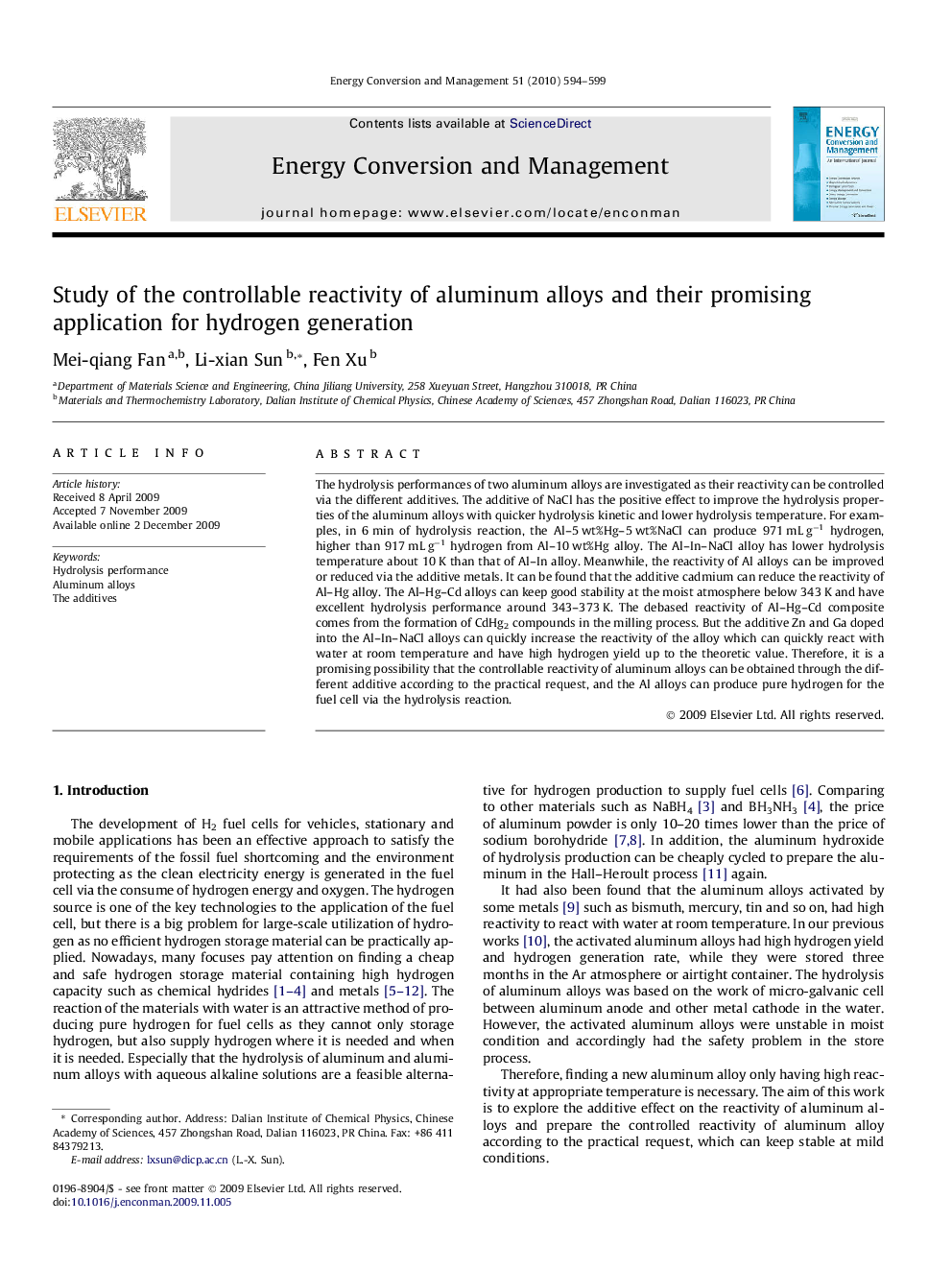| Article ID | Journal | Published Year | Pages | File Type |
|---|---|---|---|---|
| 772629 | Energy Conversion and Management | 2010 | 6 Pages |
The hydrolysis performances of two aluminum alloys are investigated as their reactivity can be controlled via the different additives. The additive of NaCl has the positive effect to improve the hydrolysis properties of the aluminum alloys with quicker hydrolysis kinetic and lower hydrolysis temperature. For examples, in 6 min of hydrolysis reaction, the Al–5 wt%Hg–5 wt%NaCl can produce 971 mL g−1 hydrogen, higher than 917 mL g−1 hydrogen from Al–10 wt%Hg alloy. The Al–In–NaCl alloy has lower hydrolysis temperature about 10 K than that of Al–In alloy. Meanwhile, the reactivity of Al alloys can be improved or reduced via the additive metals. It can be found that the additive cadmium can reduce the reactivity of Al–Hg alloy. The Al–Hg–Cd alloys can keep good stability at the moist atmosphere below 343 K and have excellent hydrolysis performance around 343–373 K. The debased reactivity of Al–Hg–Cd composite comes from the formation of CdHg2 compounds in the milling process. But the additive Zn and Ga doped into the Al–In–NaCl alloys can quickly increase the reactivity of the alloy which can quickly react with water at room temperature and have high hydrogen yield up to the theoretic value. Therefore, it is a promising possibility that the controllable reactivity of aluminum alloys can be obtained through the different additive according to the practical request, and the Al alloys can produce pure hydrogen for the fuel cell via the hydrolysis reaction.
